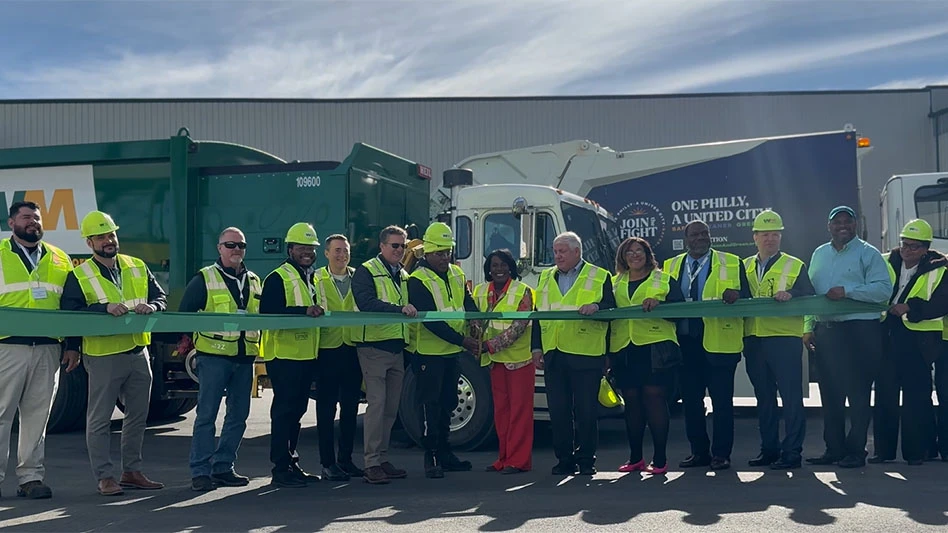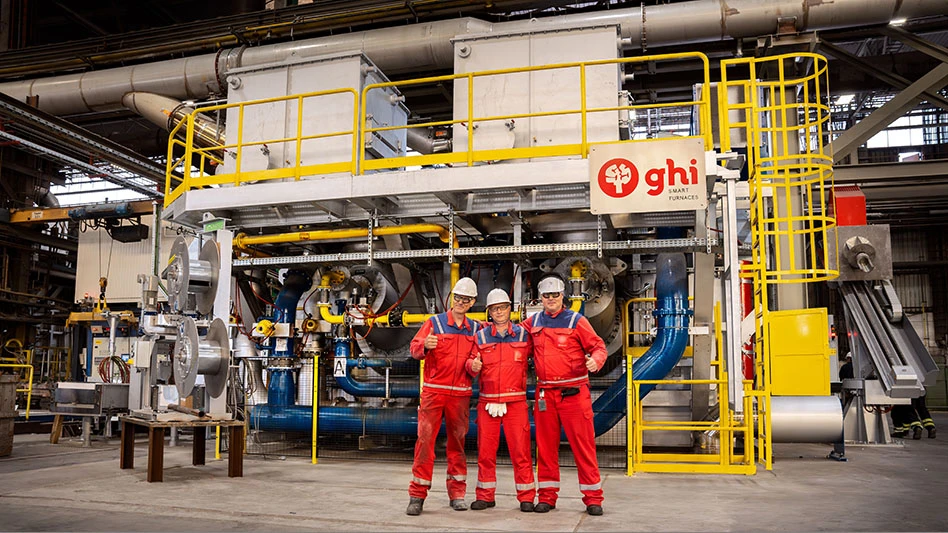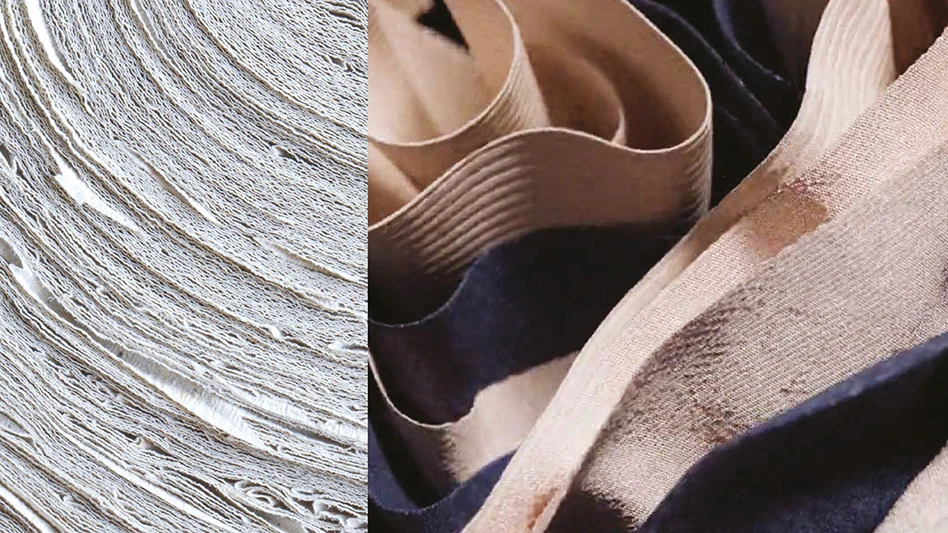
© 2jenn - stock.adobe.com
New and expanding capacity is on the horizon for recovered paper markets in North America. From 2018 to 2023, more than 5 million tons per year of new old corrugated containers (OCC) and mixed paper consuming capacity and 1 million tons per year of recycled pulp could come online within North America, according to data compiled by the Northeast Recycling Council (NERC), Brattleboro, Vermont. NERC’s “Summary of Announced Increased Capacity to Use Recycled Paper” report lists 28 expansions or additions between that time span, of which at least nine already have been completed.
According to NERC, completed expansion projects include Midwest Paper Group’s plant in Combined Locks, Wisconsin; Packaging Corp. of America’s conversion to linerboard and corrugated medium in DeRidder, Louisiana; Hood Container’s plant in St. Francisville, Louisiana; Copamex’s conversion to recycled containerboard in Anahuac, Mexico; Pratt’s new plant in Wapakoneta, Ohio; Grupo Gondi’s new mill in Monterrey, Mexico; McKinley Paper Co.’s mill in Port Angeles, Washington; Port Townsend Paper Co.’s expanded capacity in Port Townsend, Washington; and International Paper’s conversion to linerboard and containerboard in Riverdale, Alabama.
Many more projects are in the works over the next two years, and Dan Gee, president of Recovered Paper Consulting LLC and a senior associate at Atlanta-based Moore & Associates, notes that the amount of capacity coming online in North America to consume OCC and mixed paper is “more than usual.” He says it seems as if mills are being “aggressive” with adding capacity to consume recovered paper partially because of the increased need for packaging materials.
“The brown packaging business has seen steady growth for years,” he says. “2020 accelerated that growth due to COVID market demand. COVID has strengthened an already strong e-commerce business in the U.S. and globally. This translates to continued strong box demand. Another growth trend is molded fiber demand and growth.”
Bill Moore, president of Moore & Associates, says NERC’s list is mostly complete, only missing expanded capacity that is being studied at North Pacific Paper Co. (NORPAC) in Longview, Washington. NORPAC had announced plans in late 2019 to expand its ability to consume 400,000 metric tons per year of OCC and mixed paper combined.
Additionally, Moore says the Saica project on NERC’s list is a corrugator, not a paper mill, that will be consuming containerboard and not recovered paper. He adds that the Grupo Gondi project was delayed and didn’t start until 2021, and he estimates the Empire project will be completed in the second quarter of 2022.
Winners and losers
While much of the new capacity has been announced to come online between now and 2023, not all of it will come to fruition, Moore says.
Some of these announced projects are not likely to happen, he adds. A few projects he’s uncertain about include Shanying International’s project in Wickliffe, Kentucky; Total Recycled Fiber’s project in Chesapeake, Virginia; CorrVentures’ project in New York; and Crossroads Paper’s project in Salt Lake City.
Moore and Gee say a lack of announcements and financing are some indicators that projects might not be completed on time or at all.
Leonard Zeid, who is a St. Louis-based broker for Midland Davis, adds that he is skeptical about most projects until he hears about actual construction work related to them.
There is stronger optimism on other projects, though. Moore says he is confident regarding Nine Dragons’ projects as well as Green Bay Packaging’s project and Packaging Corp. of America’s project. For 2022, he says he expects Empire Recycled Fiber will happen, as well as Graphic Packaging, Atlantic Packaging, Cascades and Sonoco.
Zeid adds that the Verso project that is on hold might be one to watch and see whether another company will buy it.
Opportunities ahead
Any new domestic capacity to consume OCC and mixed paper will help to bump up recovered paper prices. If all or most projects come online, Gee says containerboard demand could be “strong to the point where there’s not enough supply. And to a degree, we’re seeing some of that right now. Supply is currently being impacted by COVID with businesses and to some degree collection being negatively impacted. Future growth of the brown recycled fiber pulp business will also increase OCC demand.”
Zeid says good capacity is coming online in the Midwest, which will help to boost prices in that region. “A lot of projects in the Midwest are pretty solid—Sonoco, Graphic Packaging and Green Bay Packaging,” he says.
With up to 6 million tons of capacity slated to come online, will capacity exceed demand for boxes? Moore, Gee and Zeid all say that’s a possibility.
“In 2023, we may have an oversupply of containerboard as box usage has to catch up,” Moore says. “We’ll have to see. But the market will catch up to absorb that. You’ll probably see not as many announcements for 2024 or 2025 the way things are now, Pratt excluded.”
Gee adds, “What I’ve seen historically over the last 25 years, mills will take a chance on building overcapacity, and then it’s who is the strongest? Who can run their mill a majority of the time? The smaller or weaker mills may have a tough time, so they become more vulnerable. It’s kind of a calculated gamble to risk overcapacity and compete.”
However, for the near-term future, the need for boxes is strong. And Zeid adds that it may only get stronger in a postpandemic world.
“Our economy should grow at some rate,” he says. “Look at where we are right now—that’s without a service economy to speak of. There are no concerts, no stadium events receiving a lot of material in boxes. But you’ll soon add those boxes back into the equation. The outlook immediately looks good.”
Latest from Recycling Today
- ReElement, Posco partner to develop rare earth, magnet supply chain
- Comau to take part in EU’s Reinforce project
- Sustainable packaging: How do we get there?
- ReMA accepts Lifetime Achievement nominations
- ExxonMobil will add to chemical recycling capacity
- ESAB unveils new cutting torch models
- Celsa UK assets sold to Czech investment fund
- EPA releases ‘National Strategy to Prevent Plastic Pollution’





